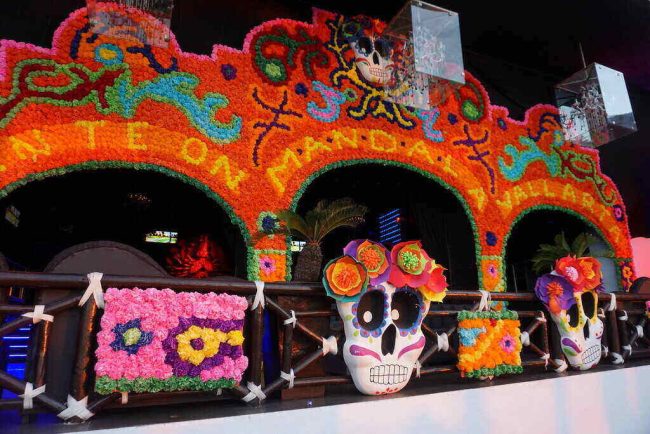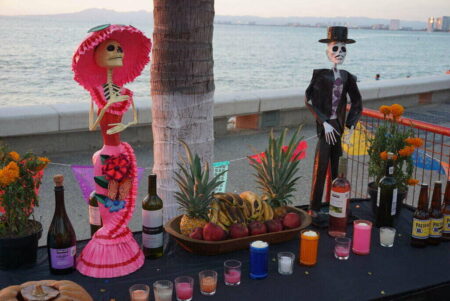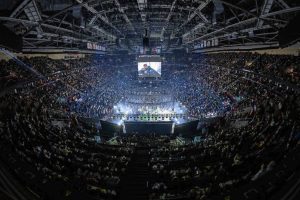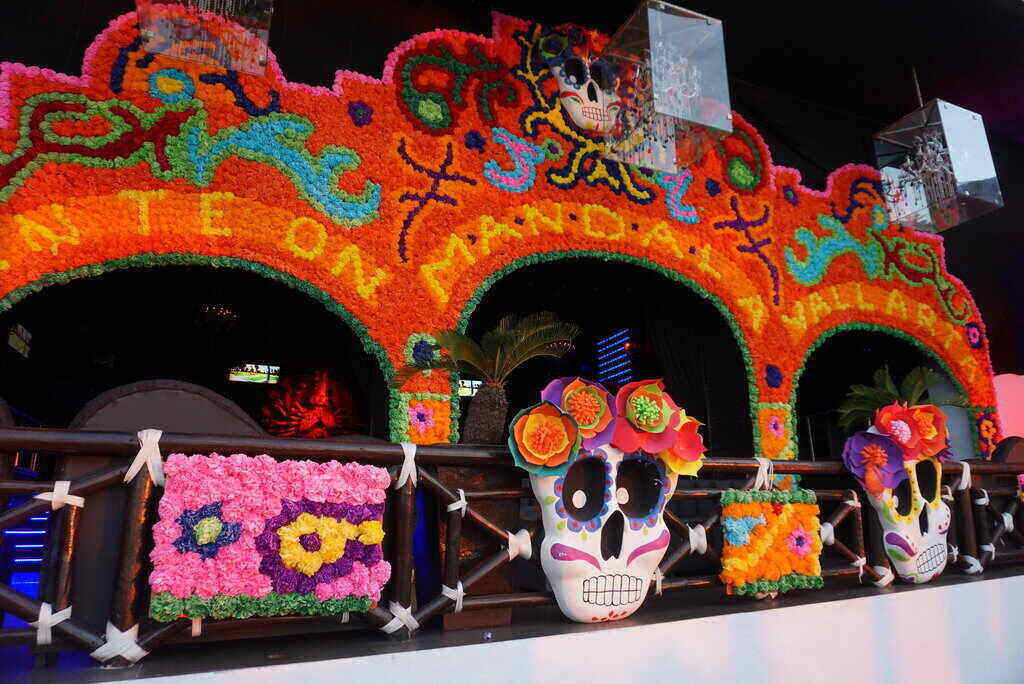|
Getting your Trinity Audio player ready...
|

Day of the Dead — Día de los Muertos — is a holiday that is celebrated from October 31 to November 2. The tradition originated in Mexico. It is a festival that combines indigenous Aztec rituals with Catholicism — which was brought to the region by Spanish conquistadores.
Día de los Muertos is celebrated during the same time as All Souls Day and All Saints Day in the Catholic calendar. To ensure that the dead would not be insulted by sadness and mourning, the Day of the Dead is a celebration of their lives.
The holiday is filled with parties, food, drink, and activities the deceased enjoyed in life. Day of the Dead recognizes death as part of the human experience. It is a continuum with birth, childhood, and becoming a contributing member of the community.
On Day of the Dead, the deceased is also a part of the community. They are awakened from their eternal slumber to share in the festivities with their loved ones.

Skulls and skeletons are the most familiar symbol of Día de los Muertos. These symbols are everywhere during the holiday. People incorporate them in their candied sweets, dolls, and parade masks. The skeletons and skulls are almost always portrayed enjoying life. They are often in fancy clothes and in entertaining situations.
An essential part of Día de los Muertos celebrations is offering altars or ofrendas. An ofrenda is not for worship but for laying out offerings to remember and honor the memory of their ancestors. There can be several layers — tiers —to an ofrenda. The top-level usually holds images of Saints and the Crucifix.
It is believed that on this holiday, the dead return to their welcoming families to spend time with their loved ones. They will enjoy the celebrations of life as they munch on their favorite foods.
The COVID-19 pandemic took many people before their time; this year they will be added to their loved ones’ Day of the Dead ofrendas. One Pilsen resident, Isabel Hernandez, created a 15-foot ofrenda in her to help celebrate the life of over 250 individuals who lost their lives to COVID-19.
Hernandez explained the holiday, “Día de los Muertos teaches us to turn the pain, the grieving, into love and appreciation for the time we had those people in our lives, in our community.”
This holiday is celebrated in various ways. Some museums will display Mexican art and hold free guided tours explaining the artwork and the holiday. Other places will hold a parade to celebrate Día de los Muertos.
Written by Sheena Robertson
Sources:
The Chicago Tribune: A guide to Day of the Dead celebrations and ofrendas in Chicago: ‘Turn the pain, the grieving, into love and appreciation’; by LAURA RODRÍGUEZ PRESA
National Geographic: Dia de los Muertos
Inside Mexico: The Day of the Dead Ofrenda; by May Herz
Top, Inset, and Featured Image Courtesy of Andrew Milligan sumo’s Flickr Page – Creative Commons License



